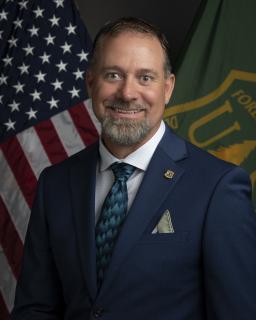By Deputy Director Adam Mendonca
Data, statistics and detailed reports tell us there are many things that can kill a wildland firefighter. Aircraft accidents, vehicle crashes, heart attacks, hit-by hazards and burnovers are known and studied causes of death. We have rapid lessons sharing, safetygrams, safecoms and the invaluable work of the Wildland Fire Lessons Learned Center to help us learn from and possibly prevent future tragedies. The government invests significant resources in understanding and mitigating these risks. Yet, when it comes to death by suicide, the data is disturbingly sparse.
Organizations like the Wildland Firefighter Foundation and those involved in Critical Incident Stress Management have tried to fill this gap, keeping their own records on suicide. However, searching any official wildland fire safety database for suicide yields little information. Suicide is notably absent from OSHA's record-keeping requirements, and only a handful of academic studies focus specifically on suicide within the wildland firefighting community. For science-driven organizations like the Forest Service, the lack of data is uncomfortable.
In the absence of solid data, we often draw parallels from other first-responder professions, structural firefighters or the military. The factors that contribute to suicide—social isolation, low pay, high stress, PTS and substance use—are prevalent in wildland firefighting, leading to the inference that our community is at a higher risk. This has become the accepted narrative.
It’s important to acknowledge that capturing suicide data is inherently challenging. Suicides often occur off-duty, outside the workplace. Families affected by these tragedies have no obligation or mechanism to report them to their loved one’s employer. Additionally, the stigma surrounding mental health means that causes of death are often omitted or avoided in obituaries and death certificates. Despite this, within the wildland fire community, many of us have been directly impacted by the loss of a co-worker or know someone who is struggling.
But this doesn’t mean that suicide is being ignored. Initiatives like the National Wildfire Coordinating Group’s Mental Health Subcommittee, the Federal Wildland Firefighter Health and Wellbeing Program, the Critical Incident Stress Management Program and other partner organizations are actively working to understand the relationship between wildland firefighting and suicide, while providing critical support and resources to prevent these deaths. And there is hope.
The wildland fire community is strong in ways that can help prevent suicide. The camaraderie among firefighters fosters deep social bonds. We are trained to look out for one another. The sense of purpose in our work builds resilience. The culture is evolving to encourage speaking up when something doesn’t feel right. We don’t need statistics to know this. These are the foundations of a support system that can save lives, but there is more work to be done.
Mental and behavioral health struggles often manifest in the workplace. When a crew member is late to PT for the fourth day in a row, hungover and disconnected, when the usually talkative module leader is withdrawn or when someone is distracted by problems at home, it’s easy to reprimand them for not pulling their weight. We might grumble behind their back and move on. But how we respond in these moments matters.
We all have the power to make a difference. Instead of isolating a struggling crew member, we can ask them how they’re really doing. We can listen without judgement. It is simple and I’m going to take the step to commit to this as part of National Suicide Prevention Week.
I’m going to initiate conversations about substance use and mental health. I will share critical resources and phone numbers. I’ll make commitments to stay connected through the winter off-season, educate myself and others on the available resources and services, and prioritize health and wellbeing over remaining silent and struggling alone. I will destigmatize mental and behavioral health by talking about it, by linking to services and professionals and by being a voice of support, especially with colleagues that struggle with mental health.
By taking action on our own health, connecting with others and responding compassionately, we might just save a life.
As we continue to work toward better data and understanding, let’s also commit to being there for each other, offering the support and kindness that can keep hope alive.
If you or someone else is experiencing life-threatening symptoms or at immediate risk of harming yourself or another person, call 911.
If you are experiencing thoughts of suicide or are in distress, call or text 988. The Suicide Prevention Lifeline provides 24/7, free, confidential support for people experiencing a crisis or suicidal thoughts. You can call, text or chat for support. Even if you are not experiencing a crisis, you can contact the service for resources and advice to help you or someone else.






